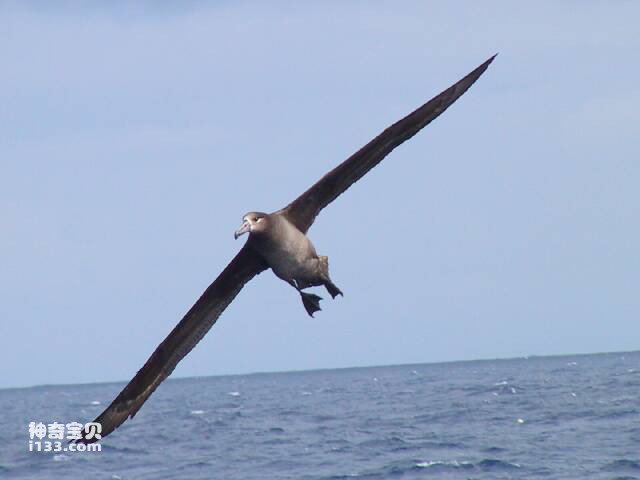The Wandering Albatross is the largest flying crow in Antarctica and the king of flying birds in the world. It is covered in pure white feathers with black markings on its tail and wing tips. Its body is streamlined. When it spreads its wings and flies, the distance between the wing tips can reach 3.4 meters.
The roaming albatross, known as the flying champion, truly deserves its reputation. It travels thousands of miles a day and is used to it. It flies for several days without getting tired. It even flies around the poles without losing its vigor. The Wandering Albatross is also an expert at gliding in the air. It can keep gliding for several hours without flapping its wings, relying only on the airflow, looking very comfortable.

The Wandering Albatross is praised by navigators as a lucky bird and a navigation bird. When ships sail on the roaring Southern Ocean, they can often be seen working tirelessly, darting, circling, and soaring to guide the ships. Once, the author encountered a roaming albatross on his way to Antarctica. At first, people mistakenly thought that it was preying on fish and shrimps injured by ships. Later, it was discovered that it was not following the stern of the ship, nor did it show any predatory behavior, but kept hovering and flying, sometimes high, sometimes low, sometimes far, sometimes close... The crew said that this was the albatross giving us " "Navigation" means that hovering at low altitude means there are icebergs or ice floes ahead, while flying high and forward means that there is an open ocean ahead. However, the ornithologists on the ship disagreed with this statement. They believed that the navigation was false and the curiosity was true. The albatross has never or rarely seen people and ships, and out of curiosity and instinct, constantly chases ships. Their argument made everyone laugh. Then, biologist Dr. Kerry added: "Albatross really brings fun to the expedition team." It can be imagined that after dozens of long and bumpy days and nights of sailing, the crew and expedition team members are exhausted and extremely lonely. Aren't they very happy to have albatross as a companion?" Everyone nodded knowingly.
Although other seabirds in the Antarctic region, such as the fulmar and the blue-eyed pelican, are also known as navigation birds, they are completely different from the albatross. They only move a few kilometers offshore from the Antarctic continent and are accustomed to following and chasing ships. Their purpose is to prey on fish, shrimp and other marine life damaged by ships and to eat leftovers discarded by the crew. When the sea is foggy and the course is difficult to discern, you can tell by seeing these seabirds that you are not far from the shore. The albatross plays a "navigation" role in the ocean far away from the coast. The combination of the two makes ships going to Antarctica have seabirds as companions along the way, which is very interesting.
animal tags: albatross seabird
We created this article in conjunction with AI technology, then made sure it was fact-checked and edited by a Animals Top editor.